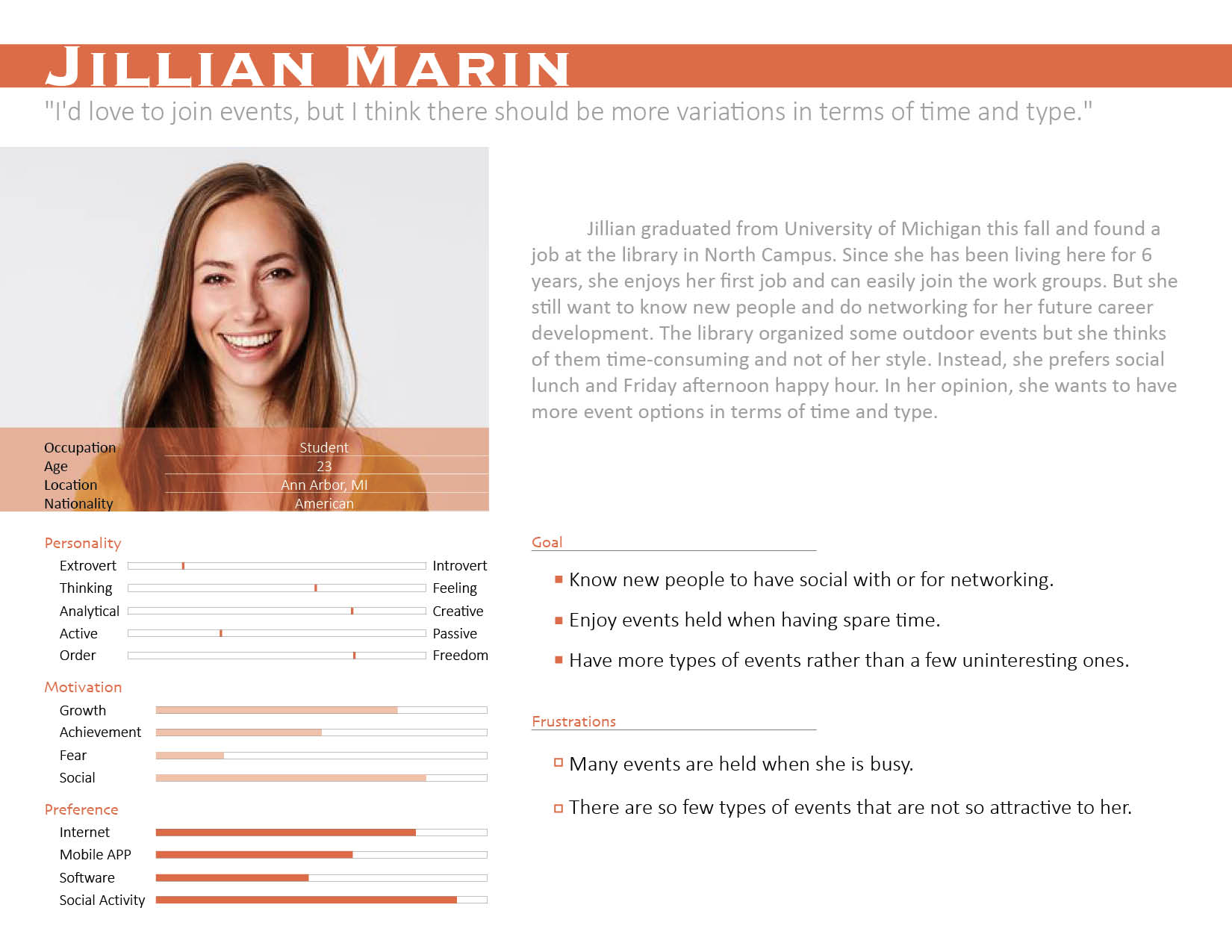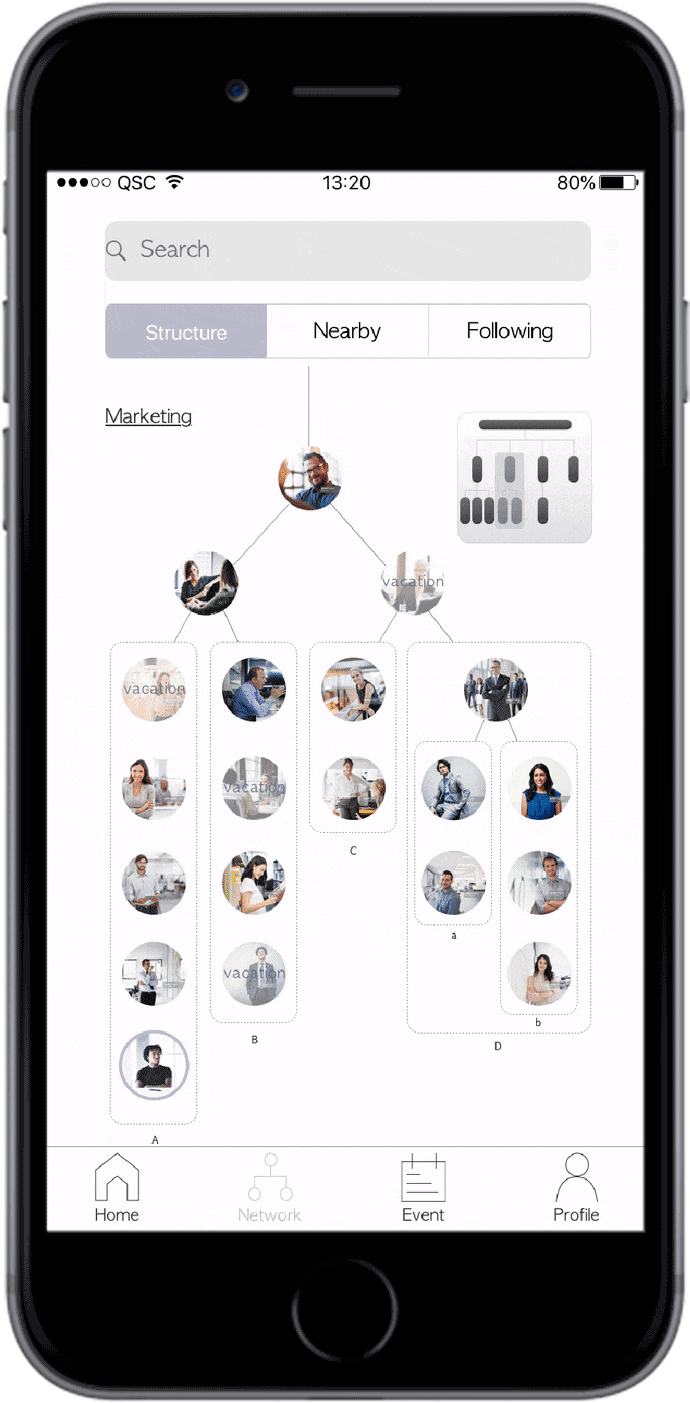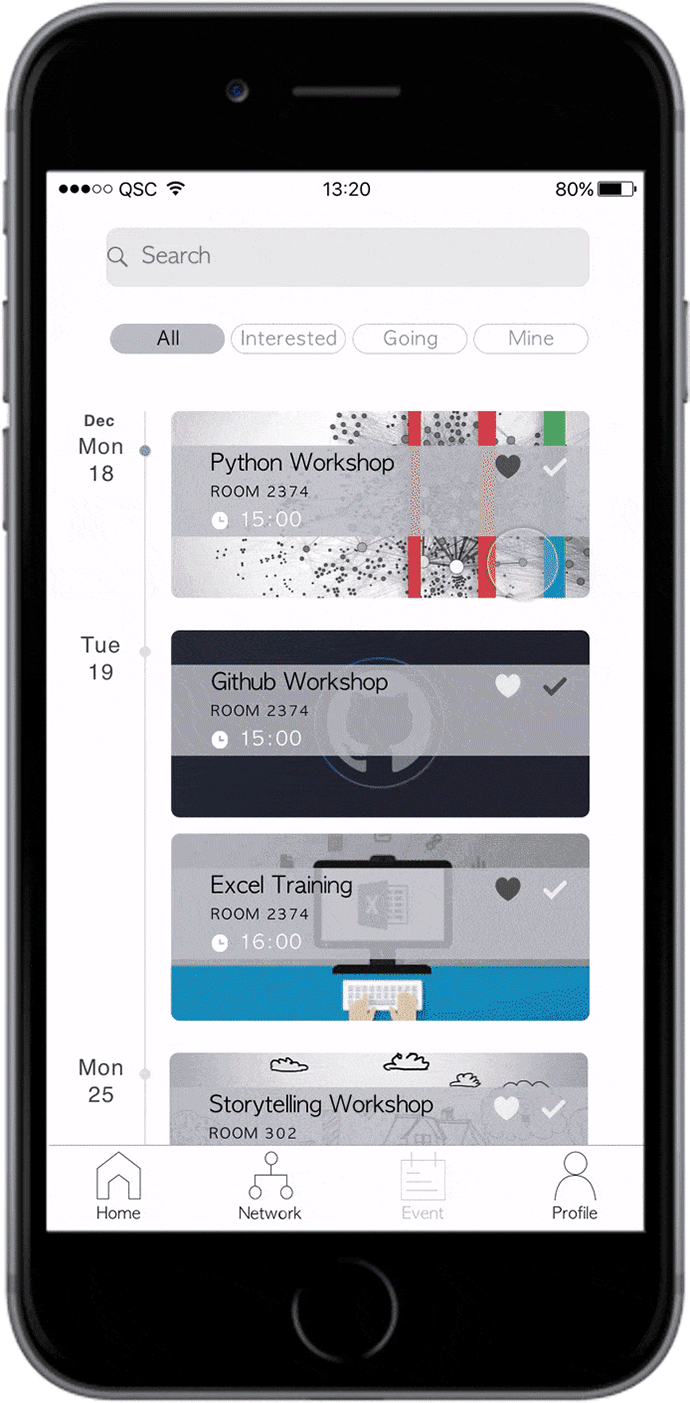Inneref
Inneref helps onboard and engage new employees in a more efficient and effective way.
This project was done with four fellow students for CHI 2018 student competition. See our summary poster

Type
Mobile App resulted from competition for 2018CHI
Time
2017.10-2017.12
Teammates
Chen Li / Qianyu Sun / Shu Zhou / Zhen Wang
Role
PM / UX Designer / UX Researcher
What I Did
1. I initialized and facilitated each meeting, summed up the findings in our research, and then divided our tasks to assign.
2. Made the UI design especially in network, made the interactive prototype and commited usability test.
Tools
Realtimeboard / Qualtrics / Sketch / Invision / Principle
CONTEXT
Engagement keeps employees from quitting
In US, 31% of US employees quit in the first half year. But if feel engaged, the employees will 59% less likely to quit in the next year. However, in 2015, only 32% of US employees feel engaged.
Engagement increases performance

PROBLEM
Onboarding and engaging new hires is challenging for organizations today. Although most companies understand the importance of good onboarding experience and the necessity to increase employment engagement, in practice,
the common orientation practice and philosophy adopted are not effective and efficient enough to achieve the goal.
RESEARCH
Literature Review
-
A personal-identity approach should be utilized to allow employees to express themselves authentically and to introduce “the true attributes of their identities” to their colleagues.
Daniel M. Cable, Francesca Gino and Bradley R. Staats. "Reinventing employee onboarding." MIT Sloan Management Review 54, 3: 23–28.
-
“Rather than focus exclusively on providing information, managers should also emphasize relationship development as a means of facilitating information transfer.”
Keith Rollag, Salvatore Parise, and Rob Cross. 2005. Getting New Hires Up to Speed Quickly. MIT Sloan Management Review 46, 2: 35–41.
Competitor Analysis
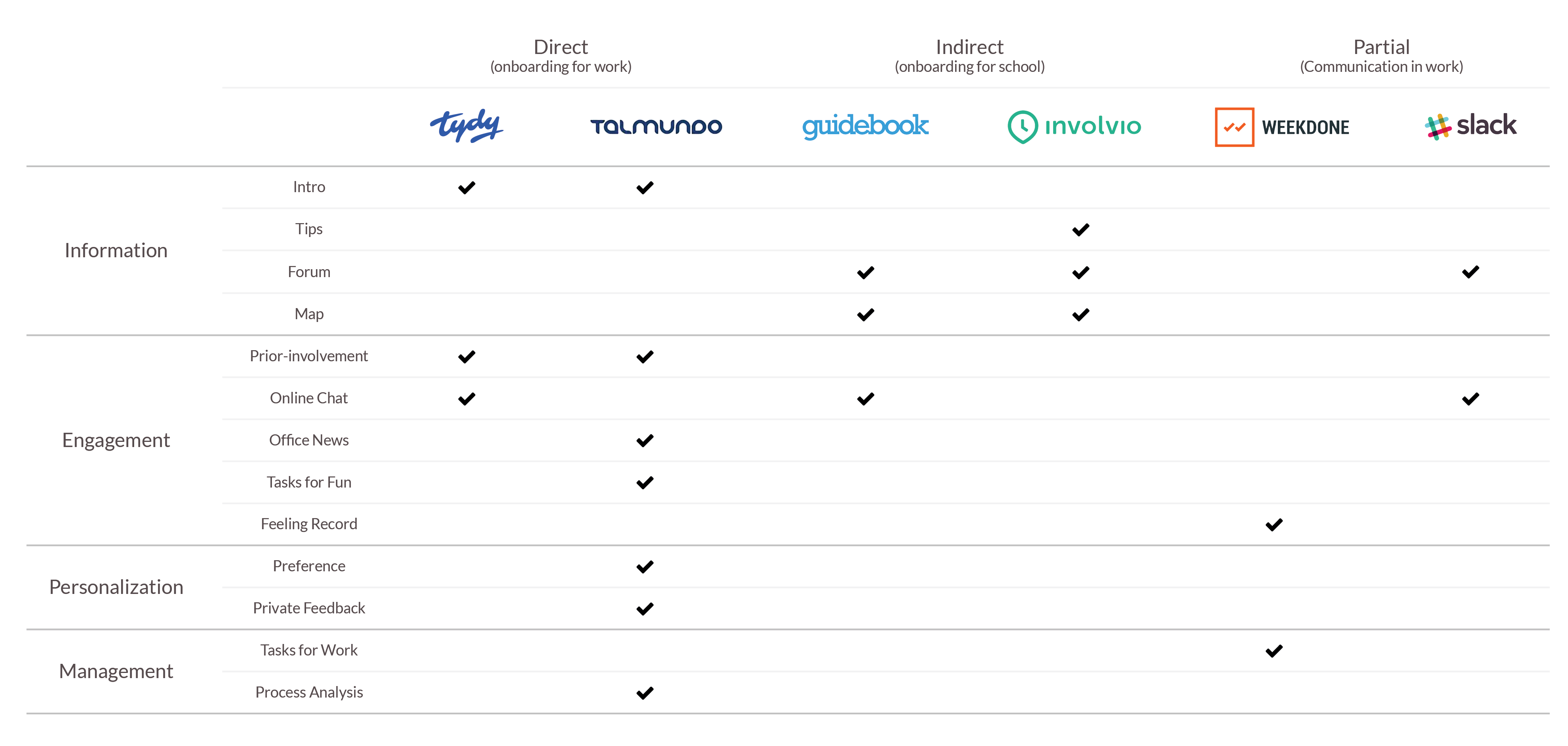
Observation
-
Most tools focus on providing introductory information, online chatting, or management.
-
Only one tool named Talmundo focus on more personal level and provides dynamic ways to engage with the new community.
Opportunity
-
Few products have combined providing information and personalization of individual employees well.
Interview & Affinity Wall
The target users are new employees who joined a company for less than 6 months. Each of us have talked to 1 to 2 people to conduct interviews, and utilised the interview notes to make an affinity wall to analyze and get insights.
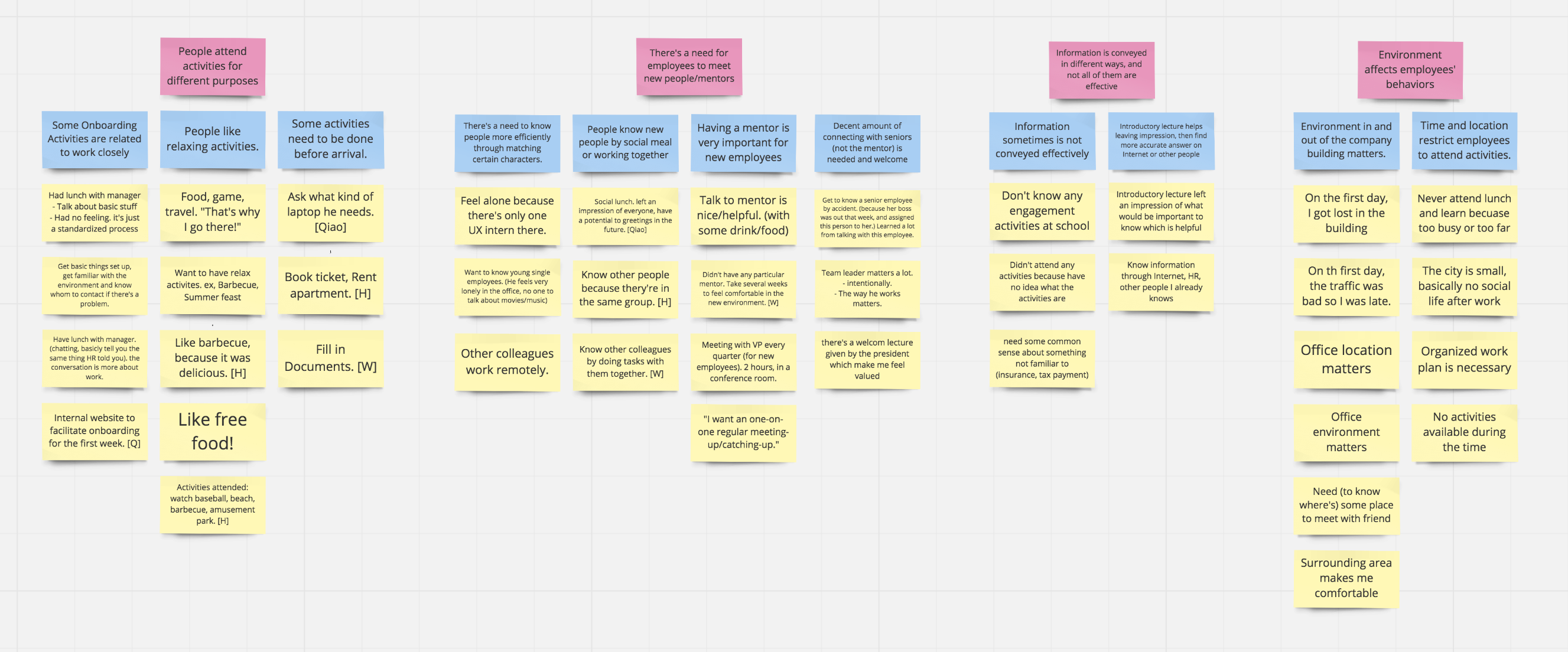
Survey
From the Affinity Wall above, we decided to create a survey to dig into more quantitative insights in the reasons why new hires attend activities, and the problems of existing ways of onboarding/engagement. We have collected around 60 respondents and got the following insights.
The Reason Why New Hires Attend Onboarding Activities
-
65% put "Meet New People" among the top two things they look for from onboarding activities;
-
30% want to engage with colleagues to an extent like hanging out after work, because they want to make work efficient, enhance professional network, and be happy in the company.
The Current Ways & Problems
-
New hires' mentors would introduce them with colleagues they will be working with, but it's hard to know colleagues out of their team.
-
New employees search through the intranet or LinkedIn to find colleagues by themselves, but it's hard to know people's personal interests, and it's not efficient.
-
They find it hard to match names with faces and positions.
-
Although there are onboarding activities, the variation of time or type is so limited that some participants either don't have time to join, or they may feel uninterested or embarrassing since they lack the common ground to join in some conversations.
Research Conclusion
Based on the aforementioned insights, we came up with 2 personas to synthesize the insights from earlier research.
So now, our goals are:
-
Provide the employees with the information about their colleagues' similarities with them;
-
Acclimate new hires with the organization chart, which facilitates them match names with faces and positions;
-
Improve the variation of events in terms of time and type.
IDEATION & ITERATION
Brainstorm
To figure out a product that can achieve the goals, we have brainstormed.

Storyboard
Then we have discussed and narrowed down to four basic features: Profile, Gamification, Network Illustration, and Event Platform. So firstly, we did some sketchy storyboards, below is part of them.
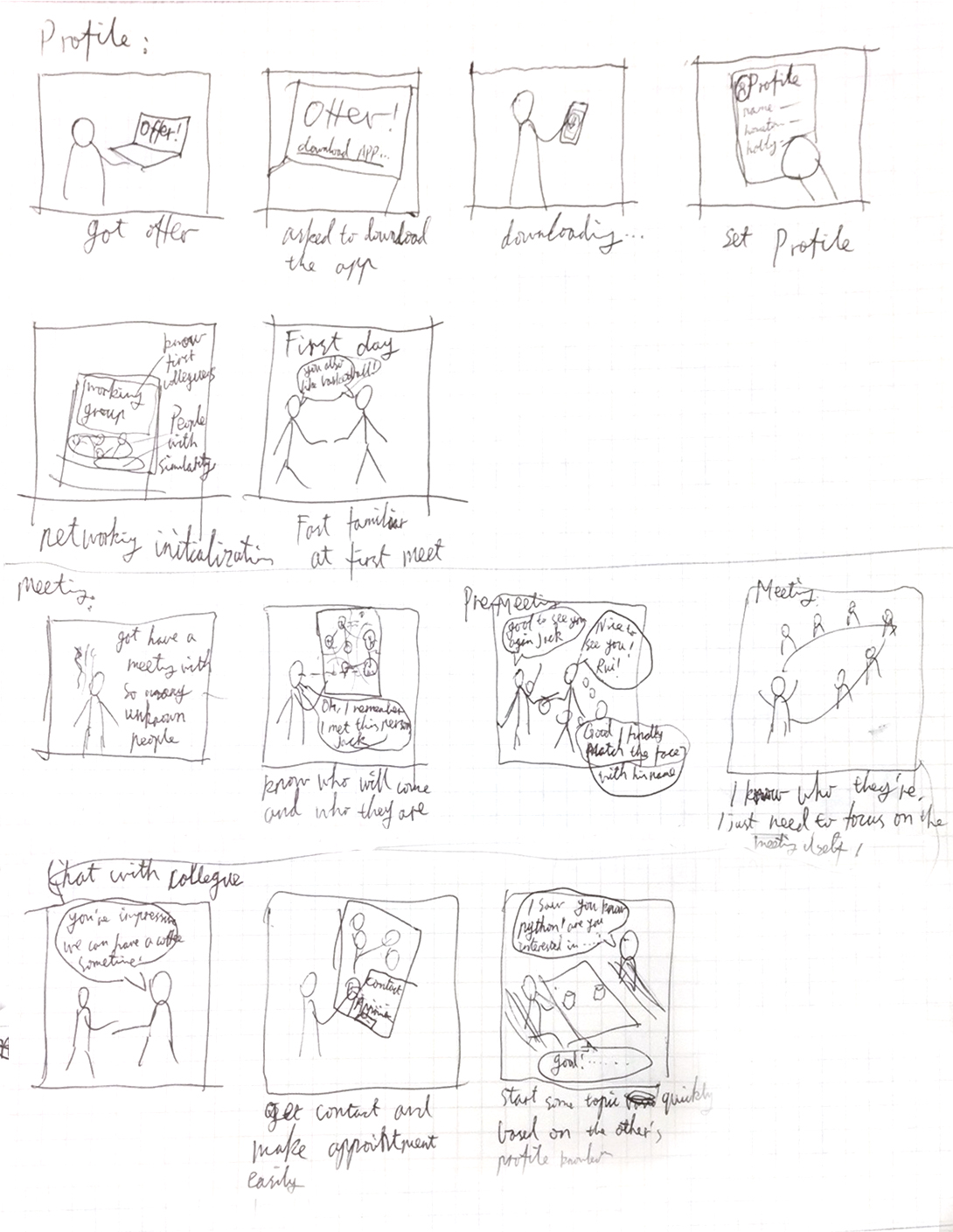
Sketch & Wireframe

-
Profile ---- Pull information from LinkedIn, Skype for Business and the intranet to auto-generate a profile.
-
Gamification ---- The whole app is like a game. The more events employees propose or attend, the more progress he/she will make in the game.
-
Network ---- Display the organizational structure in a dynamic way, where new employees can easily know other colleagues.
-
Event ---- Match and recommend company activities based on employee's profile.
User Test Feedback
We conducted 4 user tests on our lo-fi wireframes with one HR staff and three new employees. They gave us valuable feedback which will direct our further design.

for Next Iteration
-
Simplify the gamification part to a reward system, including tokens and the capacity to use it to encourage both old and new employees to engage this process.
-
Network part can be connected with other parts(like profile, search, events) to enable a stronger function.
-
Strengthening the interest match on our event function, which means connecting to users profile to identify interests and recommend accodingly, and have reward system provides incentives.
SITEMAP
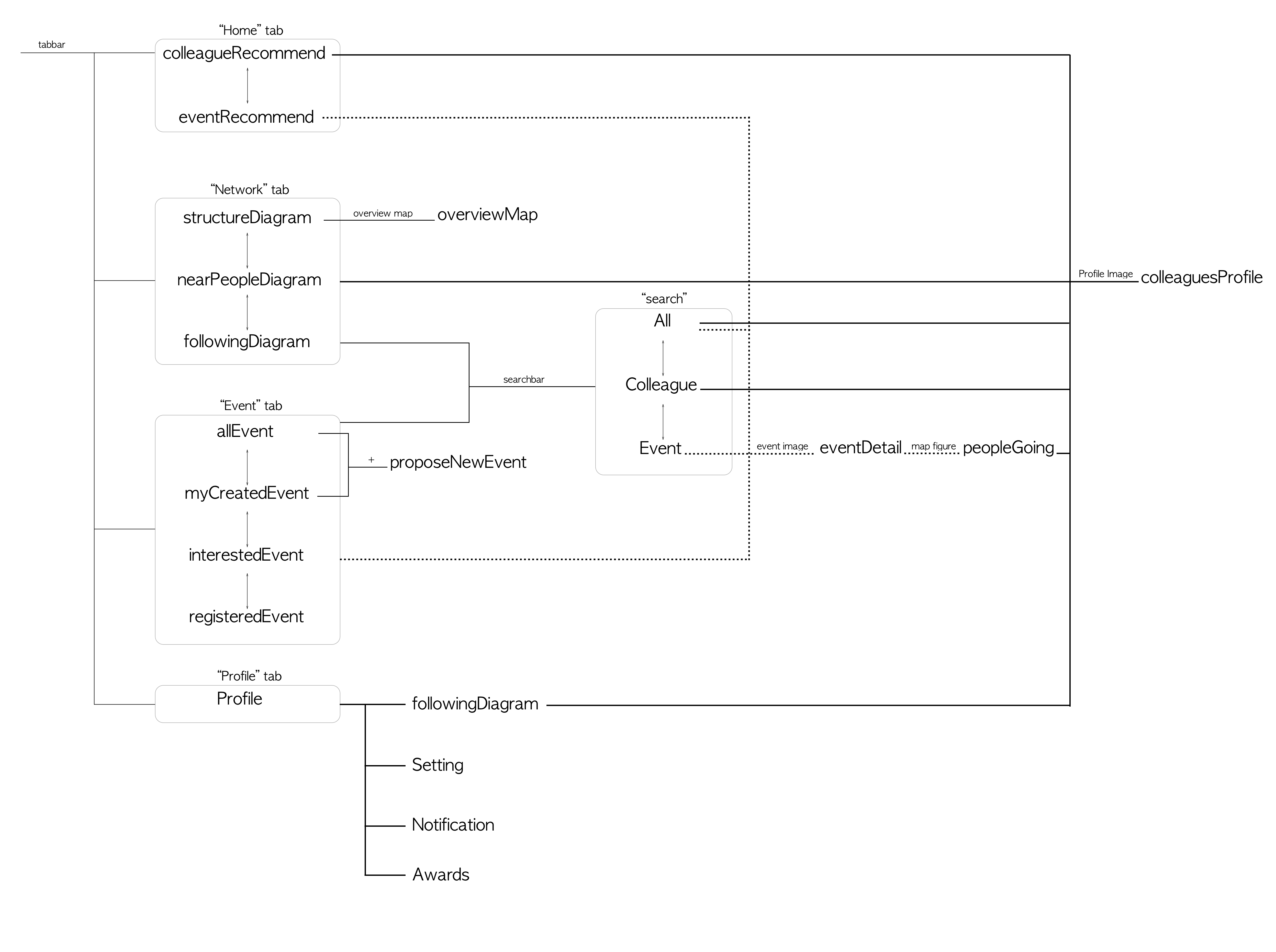
FINAL DESIGN
See recommendations of colleagues/events, and get rewards

-
Home promotes colleagues or events based on the Profile and participated events.
-
Reward System encourages employs' engagement, especially for the elder to engage the new.
Find colleagues/events effectively by "Search"
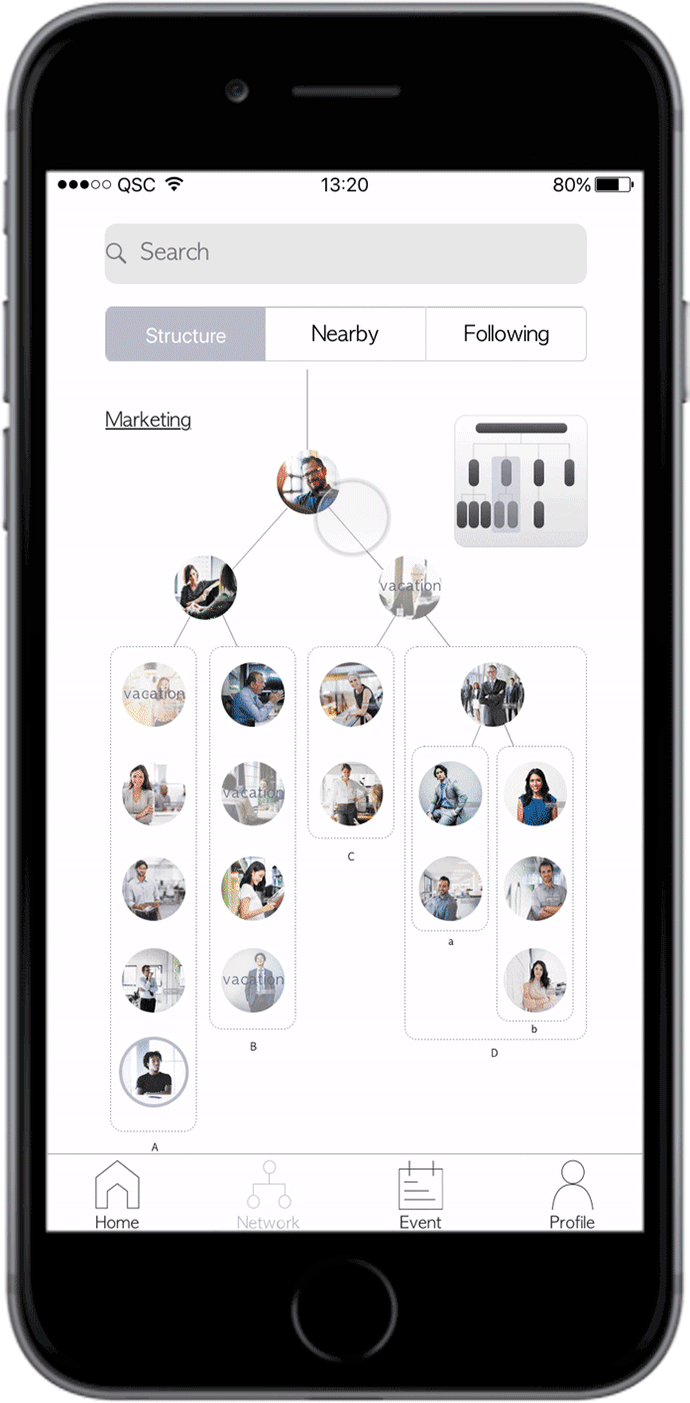
-
Information about emplyees and events are mostly pulled from online resources into Tags in the APP.
-
Searching function is based on these keyword tags. For searching colleagues, once the system finds anyone matching, the result will be ranked in a decending order of working years.

INTRODUCTION VIDEO
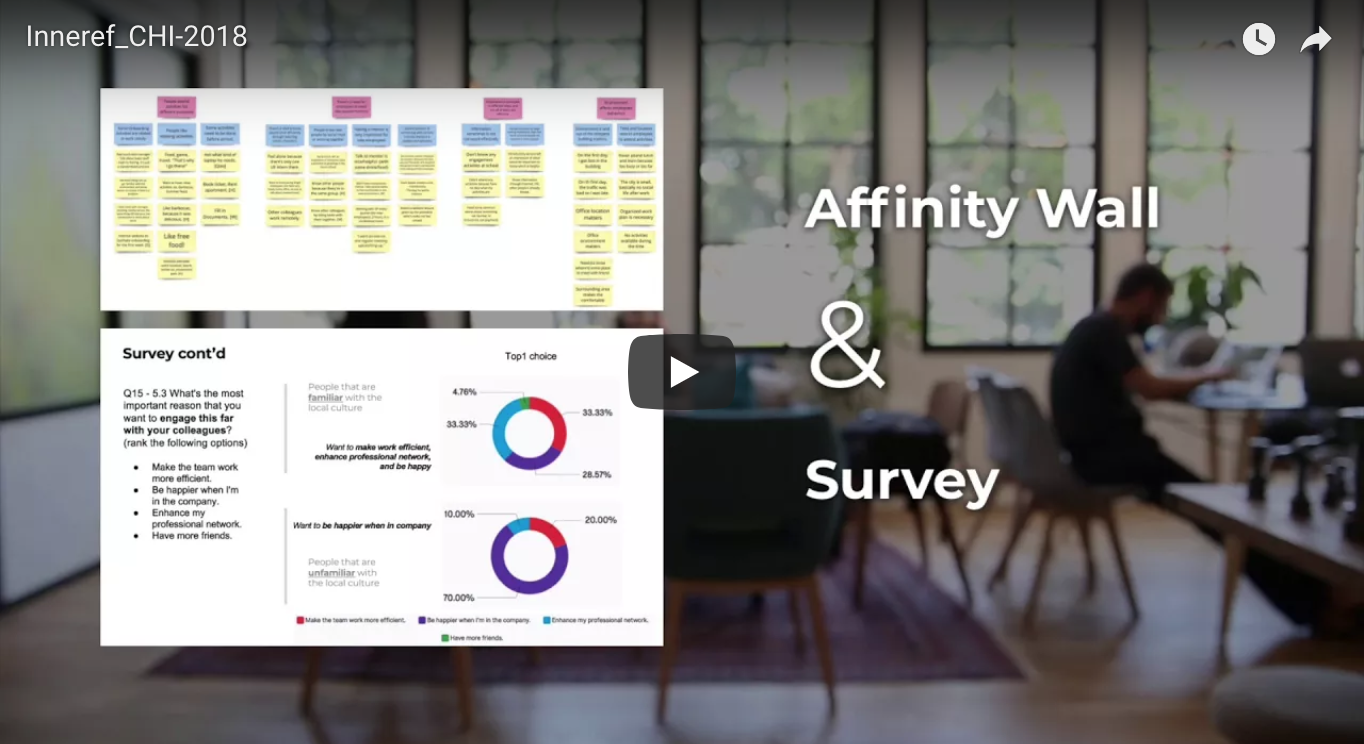
FOR FUTURE ITERATION
-
The UI design can be worked on further. We've received many suggestions about interface details, especially the info visualization for the network section. According to our current user tests, some prefer it to be a column layout, while some even want a visualization for other colleagues' workplace in the building. More research needs to be done here.
-
The current design is a mobile app. Many users mentioned their companies have some inner portals to publish company activities and other information. We would consider to transfer our design to an embeddable mini program which can be combined with current companies' intranets.
TAKEAWAY
-
Don't be afraid of well-discussed topics. Employee engagement had been discussed for years. With so many competitive products, we doubted if we could come up with something new. But it turned out that the user experience can always be improved, as long as the user needs exist.
-
Don't be afraid of "pausing" or even "moving backward" at some time. During the whole process, we had expereinced fierce discussion about where we were, why we were there, and where we should move towards. They made me feel frustrated at first, but after them I could tell all the team were refreshed and clear about our goal. I consider those moments the milestones of our project.
-
It's OK to modify the concentration of a project during the process. As mentioned, initially we found "gamification" dominated the features that users would love to have for the project. We were passionate about it as well. However, as our first drafts came out, we started to find it was really difficult to figure out a way to focus on gamification for such a tool. So did the user feedback indicate. Thus, we shifted our concentration a bit and finally made sense of most of the project.

